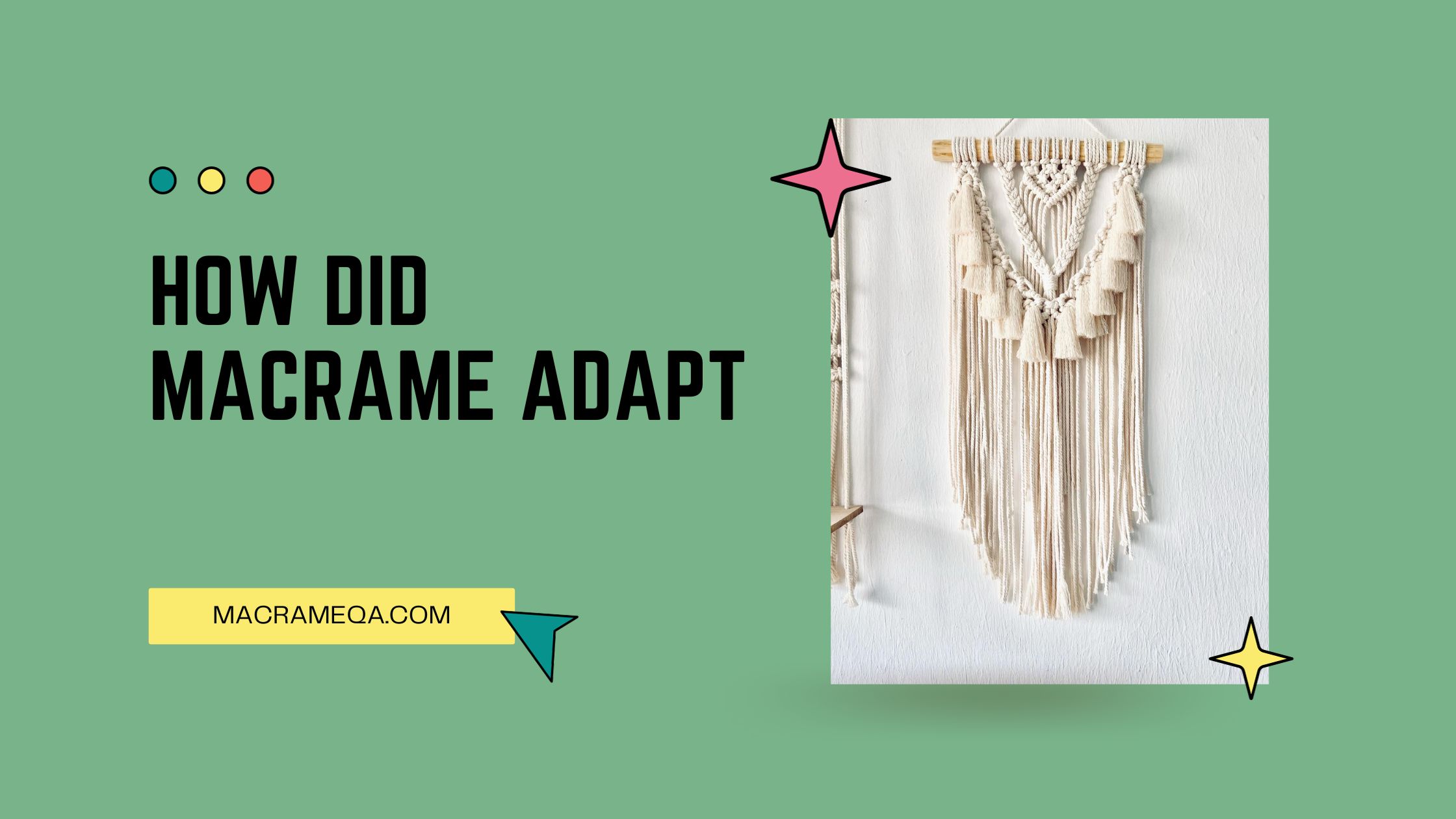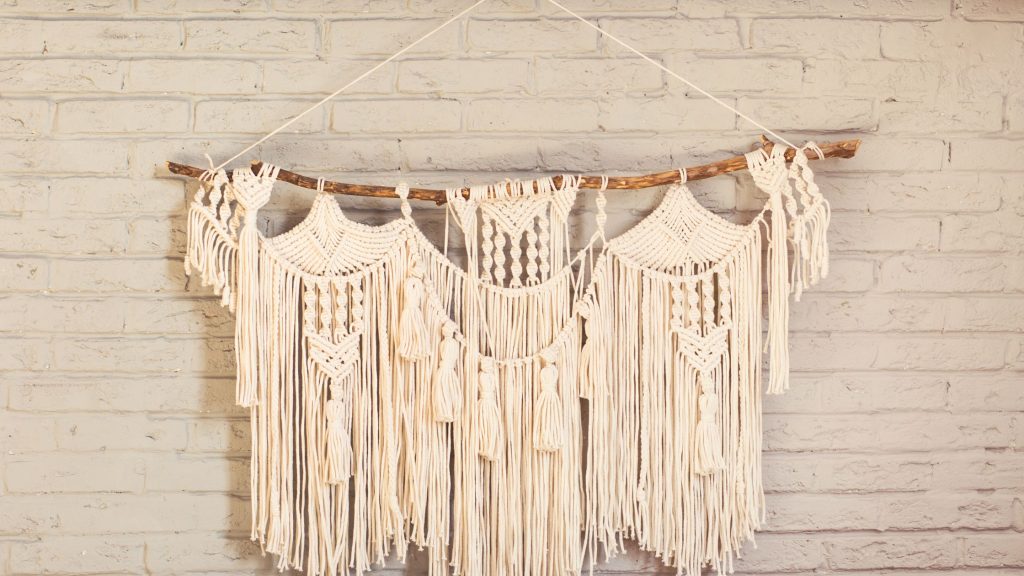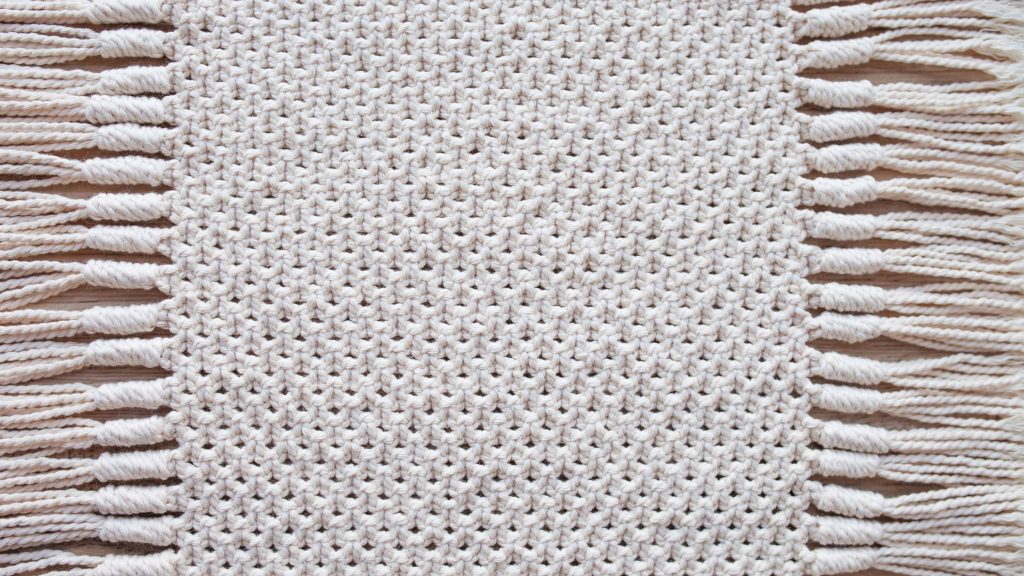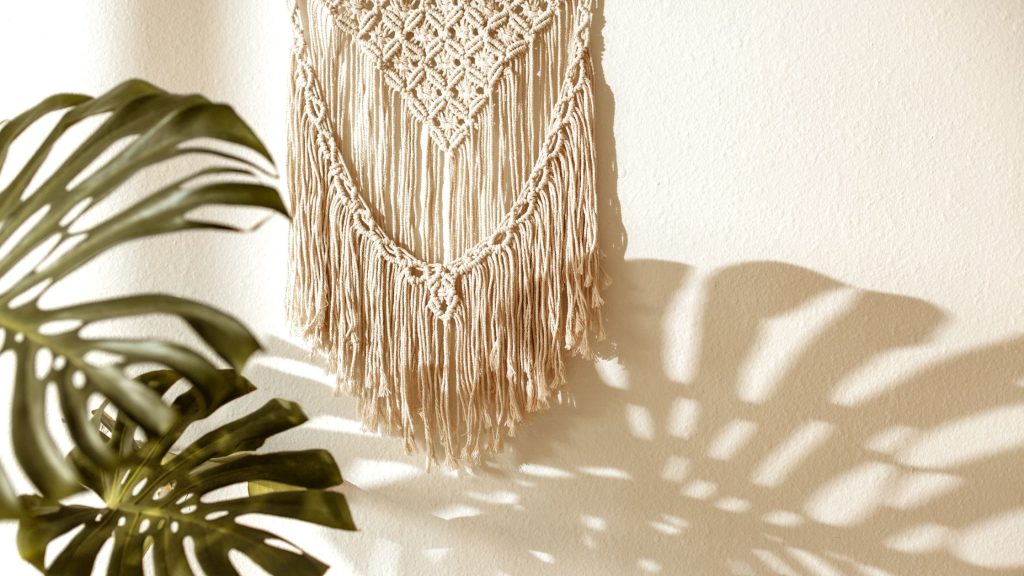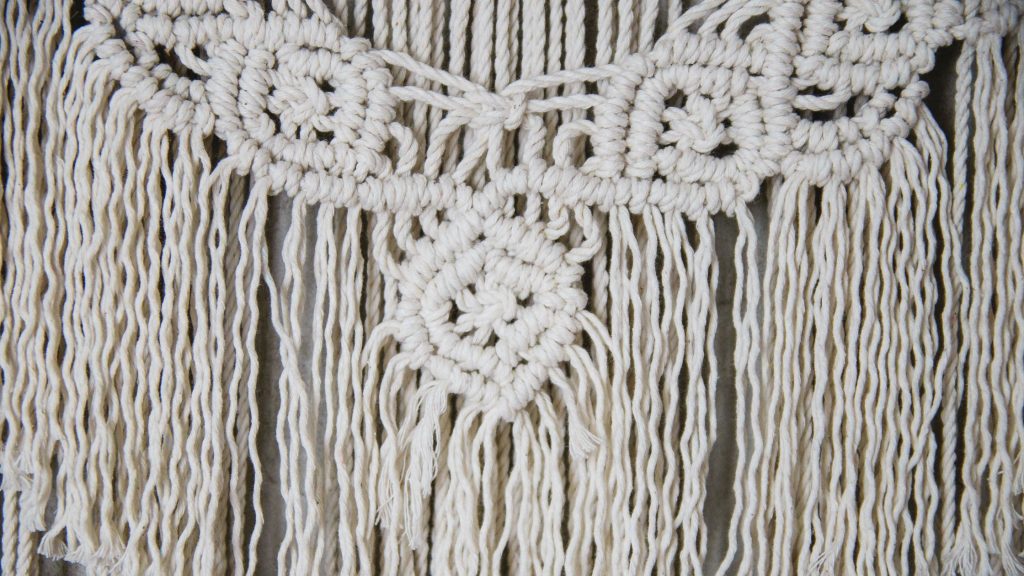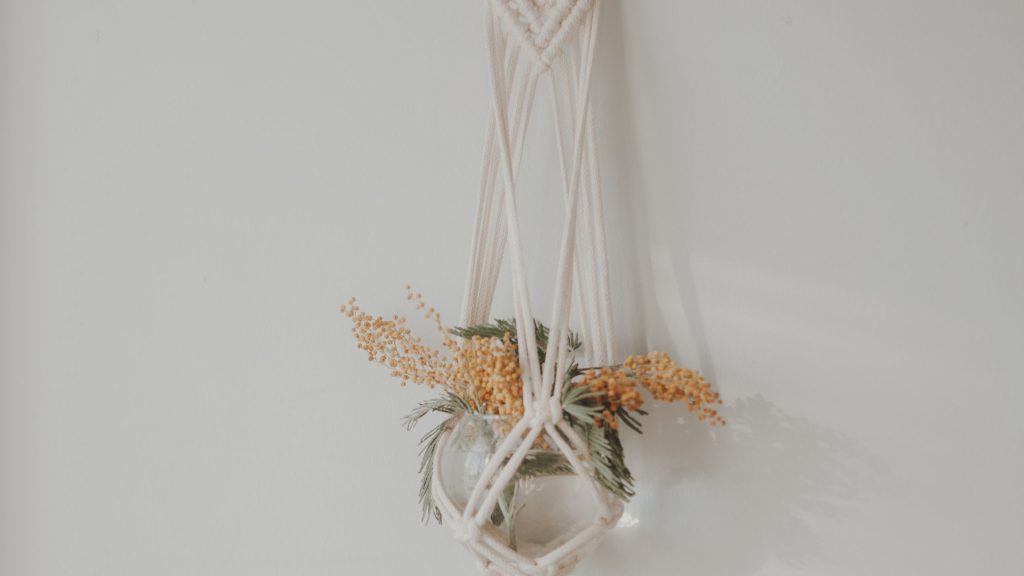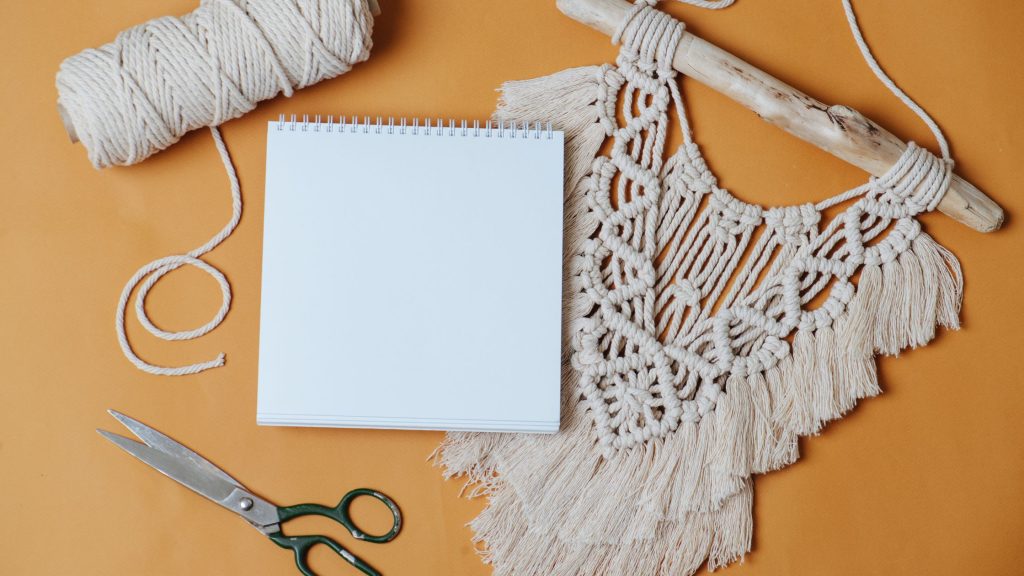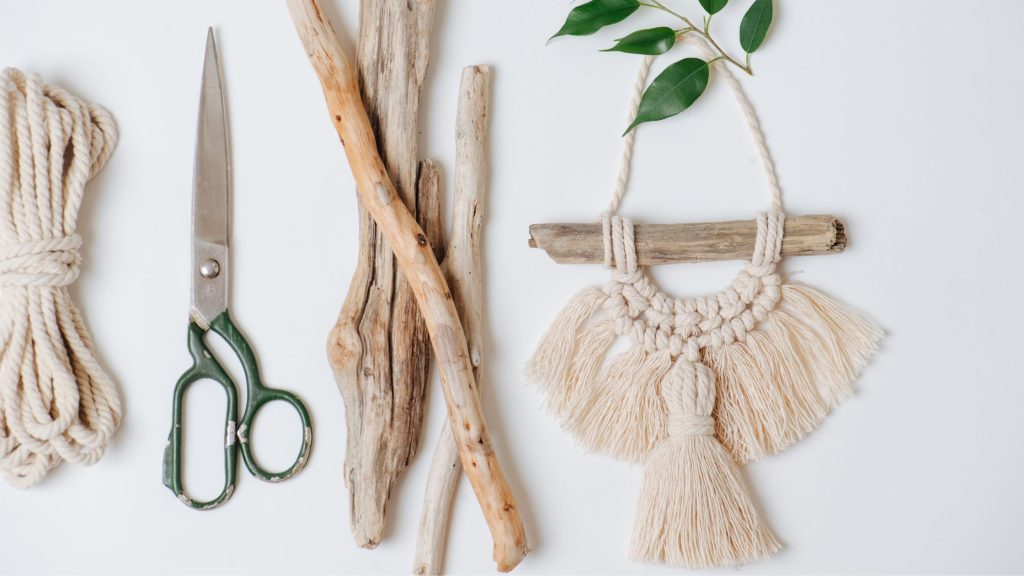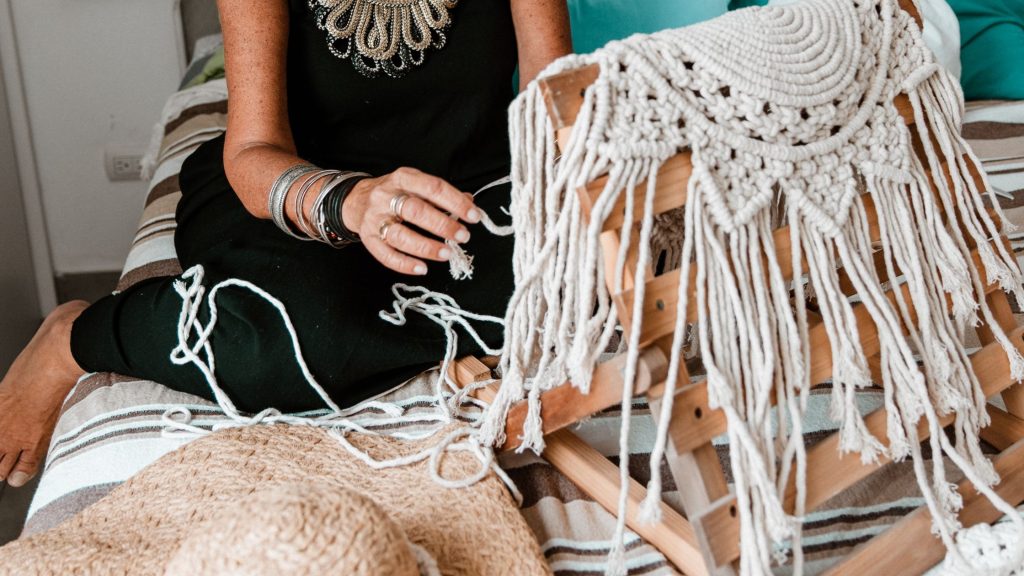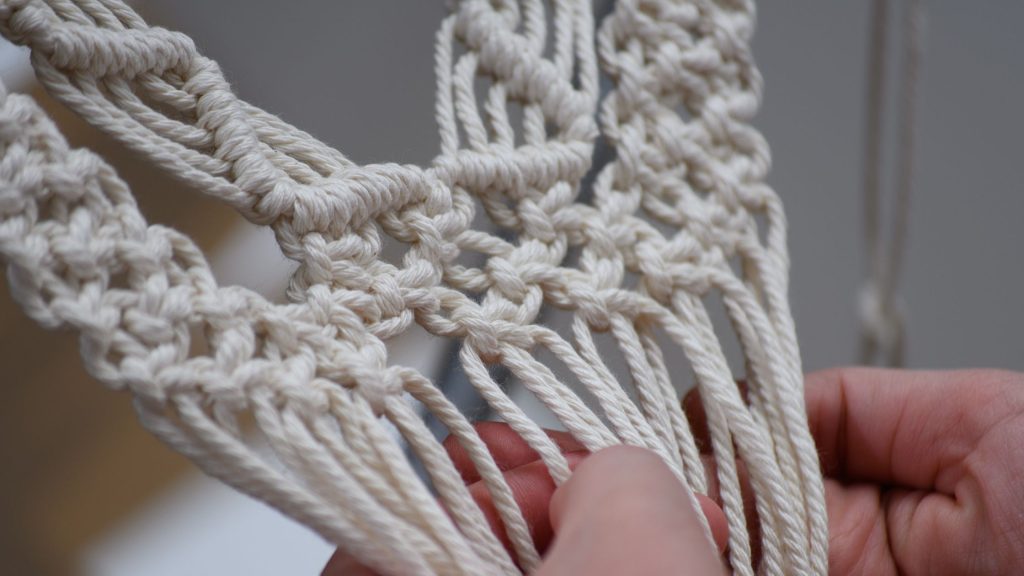Imagine stepping into a time machine and traveling back in history to witness the breathtaking evolution of macrame. From its humble beginnings in ancient civilizations to its resurgence in the modern world, macrame has seamlessly adapted to different historical periods, weaving together culture, artistry, and creativity. Each era has left its distinct mark on this intricate form of textile art, showcasing the skill and innovation of generations past. Discover the captivating story of how macrame has thrived throughout history, transforming itself to reflect the evolving tapestry of human society.
Origins of Macrame
Ancient Origins
Macrame, the art of knotting cords to create decorative and functional items, has a rich and diverse history. It is believed to have originated in ancient times, with evidence of knotted textiles found in the tombs of ancient Egyptians dating back to approximately 1100 BC. The intricate knotting techniques used in macrame were likely developed as a means of creating durable and decorative items, such as nets, snares, and clothing.
Spread to the Middle East
The art of macrame spread from Egypt to the Middle East, where it gained popularity among various cultures. It is said that Arab weavers, known for their expertise in textiles, further developed and refined the technique of macrame knotting. In the Middle East, macrame was utilized in several applications, including the creation of intricate textiles, such as curtains, bedspreads, and wall hangings.
Introduction to Europe
Macrame eventually made its way to Europe through trade routes and cultural exchanges. It is believed that the Moors, who invaded Spain in the 8th century, played a significant role in introducing macrame to the European continent. The intricate knotting techniques of macrame were quickly adopted by European craftsmen, particularly in regions like Spain and Italy. Macrame became especially popular during the Renaissance period, as it was seen as a symbol of wealth and prestige.
Macrame in the Medieval Period
Influence of Arabic Knotting Techniques
During the medieval period, the influence of Arabic knotting techniques continued to shape the development of macrame. In particular, the “Turkish knot” technique, known for its intricate and dense patterns, gained popularity throughout Europe. This influence resulted in the further refinement and diversification of macrame techniques, allowing for the creation of increasingly intricate and beautiful designs.
Usage in Religious Objects
Macrame also found its place in religious settings during the medieval period. Monks and nuns created intricate macrame pieces, such as decorative trims for vestments and altar cloths. The delicate and detailed knotting techniques used in macrame were well-suited for adding a touch of beauty and religious symbolism to these sacred objects.
Decorative Applications
Beyond its religious use, macrame experienced a surge in decorative applications during the medieval period. Nobles and the wealthy elite embraced the art form, using macrame to adorn their clothing, accessories, and interiors. Elaborate macrame trims and fringes were commonly seen on garments, and grand tapestries adorned with macrame embellishments became a symbol of opulence.
Renaissance and Baroque Macrame
Incorporation into Fashion
During the Renaissance and Baroque periods, macrame became an integral part of fashion. The elaborate knotting techniques were used to create intricate collars, cuffs, and even entire dresses. Wealthy women would adorn themselves in macrame jewelry, such as necklaces and bracelets, to showcase their status and taste.
Royal Patronage and Courtly Display
Macrame also gained favor among the nobility and royalty. European monarchs, such as Queen Elizabeth I of England, commissioned luxurious macrame tapestries and wall hangings for their palaces and courtly residences. These grand displays of macrame craftsmanship were not only visually stunning but also served as symbols of power and wealth.
Elaborate Room Decor
In addition to its use in fashion and tapestries, macrame was extensively used to enhance room decor. Elaborate macrame curtains, bed hangings, and upholstery trims adorned the interiors of grand palaces and aristocratic homes. The versatility of macrame allowed for the creation of intricate and eye-catching designs, elevating the aesthetic appeal of the living spaces.
Macrame in the Victorian Era
Artistic Revival and Popularization
Macrame experienced a revival in the Victorian era, with its popularity spreading among the middle class. This was due, in part, to the Industrial Revolution, which made macrame materials more accessible and affordable. Macrame patterns and instructional books became widely available, allowing individuals to create their own macrame pieces at home.
Influence of Eastern Aesthetics
During the Victorian era, there was a growing interest in the aesthetics of the East. Macrame, with its intricate knotting patterns reminiscent of Eastern textiles, became a popular choice for home decor and fashion. Victorian macrame often incorporated elements from Asian and Middle Eastern design, adding an exotic and romantic flair to the pieces.
Macrame in Home Décor and Jewelry
Macrame found its place in various aspects of Victorian life, including home decor and jewelry. Intricately knotted macrame plant hangers became a popular way to display indoor plants, adding a touch of elegance and greenery to Victorian homes. Macrame jewelry, such as necklaces and earrings, adorned both men and women, showcasing their appreciation for handcrafted adornments.
Macrame in the Arts and Crafts Movement
Handmade and Artistic Values
The Arts and Crafts Movement of the late 19th and early 20th centuries placed a strong emphasis on the value of handmade, artistic creations. Macrame, with its intricate knotting and attention to detail, perfectly aligned with the ethos of the movement. The focus on craftsmanship and the celebration of unique, artisanal creations made macrame a favored choice among the proponents of the Arts and Crafts Movement.
Influence of William Morris
Renowned British designer and philosopher William Morris played a significant role in popularizing macrame during the Arts and Crafts Movement. Morris incorporated macrame in his interior designs, utilizing it for items such as curtains, cushion covers, and wall hangings. His belief in the importance of elevating everyday objects to the status of art made macrame an integral part of his holistic design philosophy.
Incorporation into Interior Design
Macrame’s versatility and intricate beauty made it a popular choice for interior design during the Arts and Crafts Movement. Macrame wall hangings, room dividers, and lampshades were crafted meticulously, elevating the aesthetics of interior spaces. The handmade nature of macrame also aligned with the movement’s rejection of mass-produced, impersonal goods.
Macrame in the 20th Century
Art Nouveau and Art Deco Influences
In the early 20th century, macrame evolved to incorporate the stylistic elements of the Art Nouveau and Art Deco movements. The flowing, organic lines of Art Nouveau and the geometric, streamlined designs of Art Deco were adapted into macrame patterns. Macrame wall hangings, lampshades, and decorative screens exhibited these innovative design influences, creating unique and visually striking pieces.
Macrame in the Modernist Movement
Macrame also found its place within the Modernist movement, which emphasized simplicity, functionality, and experimentation. Artists and designers explored new materials and techniques, pushing the boundaries of traditional macrame. The clean lines and minimalist approach of Modernist design were reflected in macrame creations, resulting in more abstract and sculptural pieces.
Macrame in the Hippie Counter Culture
During the 1960s and 1970s, macrame experienced a resurgence in popularity as it became closely associated with the hippie counterculture. Macrame was embraced as a form of self-expression, with individuals creating their own macrame accessories, clothing, and home decor. The relaxed and bohemian aesthetic of macrame perfectly aligned with the free-spirited ethos of the hippie movement.
Contemporary Macrame Revival
Macrame as a Craft and DIY Trend
In recent years, macrame has seen a significant resurgence as a popular craft and DIY trend. The accessibility of macrame materials and online tutorials has made it easy for individuals to learn and create their own macrame pieces. Macrame workshops and classes have also become popular, providing opportunities for people to engage in this creative and therapeutic craft.
Macrame in Fiber Art and Sculpture
Contemporary artists and fiber artisans have pushed the boundaries of macrame, elevating it from a craft to a fine art form. Macrame is now seen in galleries and exhibitions as intricate fiber art and sculptural installations. Artists experiment with various techniques, materials, and scales, creating stunning and thought-provoking macrame masterpieces.
Collaborations with Other Art Forms
Macrame has also found its way into collaborations with other art forms, such as fashion, ceramics, and interior design. Fashion designers incorporate macrame into their collections, using knotting techniques to create unique textures and patterns. Macrame is also combined with ceramics to create stunning macrame-inspired pottery and home decor pieces. The versatility and adaptability of macrame make it a popular choice for interdisciplinary artistic collaborations.
Macrame and Cultural Appropriation
Debate and Discourse
As macrame gains popularity across cultures, discussions around cultural appropriation have been sparked. Some argue that the adoption and commercialization of macrame without proper acknowledgment of its cultural origins can be seen as appropriative. Others believe that cultural exchange and appreciation can be conducted respectfully, provided there is an acknowledgment of the origins and an effort to support and uplift the communities from which macrame originates.
Respectful Engagement with Indigenous Techniques
To avoid cultural appropriation, it is essential to engage with macrame techniques and traditions respectfully. This includes researching and learning about the cultural origins of macrame, acknowledging the contributions of indigenous communities, and supporting artisans from those communities. By actively seeking to learn and appreciate the cultural context of macrame, individuals can show respect for its heritage.
Appreciation Without Appropriation
Appreciating macrame without appropriating it involves acknowledging and respecting the cultural heritage from which it originated. This can be done by providing proper attribution, supporting artisans who continue to practice traditional macrame techniques, and valuing the cultural and historical significance of macrame. By approaching macrame with a mindset of appreciation and cultural sensitivity, it is possible to enjoy this art form without causing harm or disrespect.
Macrame in the Digital Age
Online Communities and Resources
The digital age has allowed for the rapid dissemination of macrame knowledge and the formation of thriving online communities. Social media platforms, such as Instagram and Pinterest, are filled with macrame enthusiasts sharing their creations, tutorials, and sources of inspiration. Online forums and groups provide spaces for individuals to connect, learn, and collaborate on macrame projects.
Influence of Social Media on Macrame Trends
Social media has played a pivotal role in shaping macrame trends in the digital age. Popular macrame designs and techniques quickly gain traction through viral posts, creating a cycle of inspiration and innovation. Macrame artists and influencers have built online followings, sharing their expertise and pushing the boundaries of the craft. Social media platforms continue to drive the evolution and popularity of macrame in the digital era.
Macrame in the Age of Sustainability
The focus on sustainability in the modern world has also influenced the practice of macrame. With an increased awareness of the environmental impact of mass production, individuals have turned to macrame as a way to create unique and sustainable home decor, accessories, and clothing. Macrame allows for the use of natural and eco-friendly materials, reducing the reliance on synthetic products.
Future of Macrame
Innovation in Materials and Techniques
As macrame continues to evolve, there is a growing exploration of new materials and techniques. Artists and designers are experimenting with unconventional materials, such as recycled fibers, metal wires, and unconventional knotting techniques. These innovative approaches open up new possibilities for macrame, pushing the boundaries of what can be created with this timeless craft.
Macrame in the Fashion Industry
Macrame’s versatility and unique aesthetic make it a perfect fit for the fashion industry. Designers are incorporating macrame into their collections, creating garments, accessories, and even footwear that showcase the beauty and intricacy of knotting. As sustainable fashion gains popularity, macrame’s handmade and artisanal qualities align with the desire for unique, ethically produced clothing.
Continued Exploration in Art and Design
Macrame’s enduring appeal lies in its ability to adapt to different artistic and design movements. As artists and designers continue to explore its possibilities, macrame will remain a versatile and exciting art form. Whether as intricate fiber art installations, sculptural pieces, or functional home decor, macrame will continue to captivate and inspire creative minds around the world.
Conclusion
In conclusion, macrame has adapted and evolved throughout history, from its ancient origins to its current place in contemporary art and design. Its rich and diverse history, spanning different cultures and periods, showcases its enduring appeal as a craft that continues to captivate and inspire people around the world. By understanding and respecting its cultural origins, while embracing innovation and creativity, macrame will undoubtedly continue to flourish in the future.

